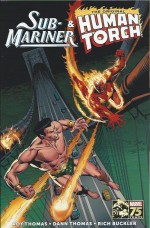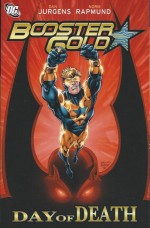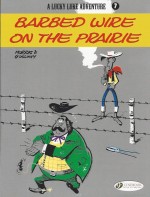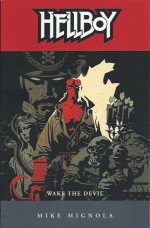
By Roy Thomas, Dann Thomas, Rich Buckler & various (Marvel)
ISBN: 978-0-7851-9048-6
Prince Namor, the Sub-Mariner is the hybrid offspring of a sub-sea Atlantean princess and an American polar explorer; a being of immense strength, highly resistant to physical harm, able to fly and thrive above and below the waves. Created by young Bill Everett, Namor technically predates Marvel/Atlas/Timely Comics.
He first caught the public’s attention as part of the elementally electrifying Fire vs. Water headlining team in Marvel Comics #1 (October 1939 and soon to become Marvel Mystery Comics) alongside the Human Torch, but had originally been seen in a truncated version in the monochrome Motion Picture Funnies, a weekly promotional giveaway handed out to moviegoers earlier in the year.
Quickly becoming one of the new company’s biggest draws, Namor gained his own title at the end of 1940 (cover-dated Spring 1941) and was one of the last super-characters to go at the end of the first heroic age. In 1954, when Atlas (as the company then was) briefly revived its “Big Three†(the Torch and Captain America being the other two), Everett returned for an extended run of superb fantasy tales, but even so the time wasn’t right and the title sunk again.
When Stan Lee & Jack Kirby began reinventing comic-books in 1961 with Fantastic Four, they revived the forgotten amphibian as a troubled, semi-amnesiac, yet decidedly more regal and grandiose anti-hero, understandably embittered at the loss of his sub-sea kingdom which had seemingly been destroyed by American atomic testing.
He also became a dangerous bad-boy romantic interest: besotted with the FF’s golden-haired Sue Storm…
Namor knocked around the budding Marvel universe for few years, squabbling with assorted heroes such as Daredevil, the Avengers and X-Men, before securing his own series as part of “split-book†Tales to Astonish with fellow antisocial antihero the Incredible Hulk,
In 1988, as part of Marvel’s 50th Anniversary celebrations, that phenomenal half-century of comicbook history was abridged, amended, updated and generally précised by avowed fan and self-appointed keeper of the chronology Roy Thomas and his writing partner Dann Thomas who collaboratively commemorated the Avenging Son’s contribution in 12-part Limited Series miniseries The Saga of the Sub-Mariner. The saga was rapturously drawn by Rich Buckler.
Roy and Rich did the same with The Saga of the Original Human Torch – a 4-part series which ran from April to July 1990 – and both sides of the tempestuous coin are triumphantly tossed together in this splendidly all-encompassing, no-nonsense textbook of historic Fights ‘n’ Tights mythology…
It all begins thousands of years ago with ‘A Legend a-Borning’ from The Saga of the Sub-Mariner #1 (November 1988) with Buckler inked by Bob McLeod. A short history of the sinking of antediluvian Atlantis and its eventual reoccupation by nomadic tribes of water-breathing Homo Mermanus follows. The water-breathing wanderers splendidly flourish deep in the icy waters, and their story leads to a certain American research vessel which sails into icy waters in 1920…
Its depth-charging and icebreaking has horrendous consequences for the citizens of the depths and in response Emperor Thakorr organises a possibly punitive expedition. Instead his daughter Princess Fen uses experimental air-breathing serums to infiltrate the ship and forms a brief liaison with Captain Leonard McKenzie. They even marry but neither is aware that the voyage has been arranged by unscrupulous telepath Paul Destine who is drawn to the area by an uncanny device of ancient power and origins…
Whilst Destine is being buried under a catastrophic avalanche trying to excavate the artefact, a raiding party from Atlantis boards the ship and drags Fen back home. She believes her husband is killed in the attack…
Nine months later a strange, pink-skinned baby is born beneath the deep blue sea…
The story resumes years later with teenaged Namor experiencing prejudice firsthand as he plays with his blue-skinned chums and royal cousin Prince Byrrah. The passing of his callow years are interspersed with his grandfather’s disdain, his mother’s tales of the fabled “Americans†and the annoying girl Dorma who is always hanging around…
Every day seems to point out another way in which he differs from his people, such as his ever increasing strength, ability to live unaided on the surface and the wings on his ankles which give him the power of flight.
Life changes forever when the youngster is salvaging a sunken ship and shockingly encounters a brace of clunky mechanical men from the surface world doing the same.
In panic he attacks, severing the control cables which connect to a ship far above and proudly hauling them to Atlantis as a prize. For once grandfather is delighted: especially when the face plates are pried open and he sees dead surface-men within.
He’s ever more gleeful when Byrrah suggests Namor should go beard the Surfacers in their own realm to pay them back for the past destruction of Atlantis. Young, feisty and gullible, Namor sets off, ready to live up to his name which means ‘Avenging Son’…
‘A Prince in New York’ spectacularly depicts the fantastic reign of terror and destruction Sub-Mariner wrought upon the city until distracted and talked down by plucky blonde policewoman Betty Dean. It then reveals how he learns to despise Nazi Germany’s maritime depredations before ‘A Fire on the Water’ details how New York Special Policeman the (original) Human Torch is deputised to stop him at all costs…
He never quite succeeds but the ongoing clash resulted in some of the most astonishing scraps in comics history. With the city almost wrecked by their battles Betty Dean again steps in to calm the boiling waters and the next chapter – inked by Richardson & Company – introduced the ‘Invaders!’ as Hitler incomprehensibly decides to eradicate Atlantis with depth charges and U-boats. The act of wanton hatred merely secures the Sub-Mariner’s fanatical aid for the Allied Powers.
With Thakorr wounded, the people elect Namor Emperor by popular acclaim before watching him swim off to crush the Axis and their super-powered servants. He fights with and beside the Torch, Captain America, Bucky, Spitfire and Union Jack. By the time the war is won and Namor returns to his realm, Byrrah and his crony Commander Krang have turned recuperating Thakorr against his interim emperor and Sub-Mariner finds himself banished. Only Lady Dorma’s impassioned intervention prevents the homecoming becoming a bloodbath…
With nowhere else to go Namor rejoins his surface superhero friends to create the post-war All-Winners Squad, before eventually being summoned home by his cousin Namora. Atlantis has been ravaged by air-breathing gangsters…
Seeking vengeance they team up with Betty for a short-lived crusade against criminals, madmen and monsters until again recalled to the rebuilt underwater kingdom.
Namor’s years away had gradually diminished his mighty hybrid abilities, but now-recovered Thakorr orders Atlantis’ greatest scientists to restore them so the Sub-Mariner can renew the Realm’s war against all surface-men…
Instead, Namor attempts diplomacy but his State Visit to the United Nations resulted in violent protests and the death of a bystander. He returns to his grandfather a bitter man, but still argues against war, no matter how hard General Krang and Byrrah urge it…
When Atlantis is wracked by seaquakes Namor leads a patrol to the polar cap above and discovers freshly-exhumed Paul Destine is responsible. The psychic had found a fantastic Helmet of Power which magnified his gifts exponentially and decided to test his new abilities on the closest population centre…
Enraged Namor’s physical might is useless against the tele-potent madman and in an instant Destine wipes his fishy foe’s memories and sends him to live as an amnesiac amongst the dregs of New York, blindly awaiting his future ‘Dark Destiny’ (McLeod inks)…
The epic history lesson reaches the dawn of the Marvel Age decades later as ‘Rage and Remembrance’ recaps the epochal events after new Human Torch Johnny Storm restores the memory of a weary derelict and unleashes the rage of the Sub-Mariner once again. With his mind and most of his memories back Namor instantly heads home to find Atlantis razed and his people scattered. Blaming the humans, he launches a series of blistering attacks on the Fantastic Four whilst attempting to win the heart of the clearly conflicted Invisible Girl…
As months pass he discovers his people had relocated and rebuilt Atlantis. Namor is re-elected Emperor over the protests of Byrrah and betrothed to Lady Dorma, unknowingly earning the eternal enmity of Warlord Krang who has always wanted her…
His war against the surface-men continues, escalating into a brief invasion of New York, a turbulent alliance with the Hulk and clash with the ‘Avengers!’ (Mike Gustovich inks) which results in the revival of his now-forgotten Invaders comrade Captain America…
Sub-Mariner’s pointless sorties against mankind continue as he forcefully adds the X-Men and Magneto to his roster of enemies whilst still trying to take Sue Storm away from Reed Richards.
After repelling an invasion by sub-sea barbarian Attuma he softens and again attempts to gain official recognition for Atlantis. Whilst he is making his embassage, however, Krang seizes control of Atlantis. After battling Daredevil, Namor returns too his kingdom, deals with the usurper and more-or-less dials back his campaign against the surface. Sadly this peace is interrupted as Destine again strikes inviting the new monarch to a ‘Rendezvous with Destiny!’ (McLeod inks).
Time and events telescope from now on as ‘Losses in Battle’ rapidly traces Namor’s showdown with the mental maniac, alliance with the Inhuman Triton and battles with Plantman, Dr. Dorcas, Tiger Shark, the Thing and a host of others, as well a reunion with Betty Prentiss (nee Dean) and rise of the sinister antediluvian Serpent Cult of Lemuria which first devised the formidable Helmet of Power in eons past.
Also revealed is how Namor’s marriage to Dorma is thwarted by murderous Lemurian LLyra and his subsequent agonising first and last meetings with his father…
‘Blood Ties’ then details his meeting with and adoption of Namora’s teenaged daughter Namorita, clashes with Doctor Doom and MODOK, an alliance of Byrrah and Llyra and origins of the Defenders before ‘Triumphs… and Tragedy!‘ (inked by McLeod & Co) brings us to a cameo-packed conclusion, relating Namor’s enforced alliance with Doom, admission into the Mighty Avengers and loss of two of his greatest loves…
Although appearing a tad rushed, the writing is strong: offering fresh insights for those familiar with the original material whilst presenting the chronicles in an engaging and appetising manner for those coming to the stories for the first time. Moreover Buckler’s solidly dependable illustration capably handles a wide, wild and capacious cast with great style and verve.
Balancing the watery wonderment is the later and far shorter comics chronology of Sub-Mariner’s arch ally and favourite enemy as first seen in The Saga of the Original Human Torch.
It starts with ‘The Lighted Torch’ by Thomas, Buckler & Danny Bulanadi, which shows how the Flaming Fury burst into life as a malfunctioning humanoid devised by troubled and acquisitive Professor Phineas Horton. Instantly igniting into an uncontrollable fireball whenever exposed to air, the artificial innocent was consigned to entombment in concrete but escaped to accidentally imperil the metropolis until it/he fell into the hands of a malign mobster named Sardo.
When the crook’s attempts to use the android as a terror weapon dramatically backfired the hapless newborn was left a misunderstood fugitive – like a modern day Frankenstein’s monster. Even his creator only saw the fiery Prometheus as a means of making money.
Gradually gaining control of his flammability, the angry, perpetually rejected android decides to make his own way in the world…
Instinctively honest, the creature saw crime and wickedness everywhere and resolved to do something about it. Indistinguishable from human when not afire, he joined the police as Jim Hammond, tackling ordinary thugs even as his volcanic alter ego battled such outlandish bandits as Asbestos Lady. Before long the Torch met Betty Dean when New York City Chief of Police John C. Wilson asked him to stop the savage Sub-Mariner from destroying everything. The battles are spectacular but inconclusive but only end after Betty intervenes and brokers a tenuous ceasefire.
Later, a brusque reunion with Horton sets the Torch of the trail of his creator’s former assistant Fred Raymond. Hammond is too late to stop Asbestos Lady murdering the Raymonds in a train wreck but adopts their little boy Toro who gains the power to become a human torch as soon as he meets the artificial avenger. The partners in peril become a team who set ‘The World on Fire!’; battling beside Namor in the Invaders for the duration of WWII.
They even play a major role in ending the conflict in 1945 when they storm a Berlin bunker and incinerate Hitler, before rising ‘Out of the Ashes…’ (inked by Alfredo Alcala) by battling Homefront hostiles, exposing Machiavellian android mastermind Adam-II who, with knowledge of the future, attempts to assassinate a group of strangers who would all eventually be Presidents of the USA. The Fiery Furies formed the backbone of the All-Winners Squad, battling maniacs and conquerors from tomorrow, continuing their campaign against crime long after their comrades retired…
When a family crisis benches Toro, the Torch soldiers on with new sidekick Sun Girl until he returns. The reunion is destined to short and far from sweet…
The hot history lesson concludes in ‘The Flaming Fifties!’ (inked by Romeo Tanghal) as Jim Hammond bursts from a desert grave during a nuclear test explosion, revived from a chemically-induced coma mimicking death. His last memory was of being ambushed by gangsters and sprayed with a chemical which inhibited his flame and knocked him out. Blazing back to the ambush site he attacks his assailants and discovers four years have passed…
When they try the same solution again the compound no longer works on his atomically charged form and after a band of G-Men burst in the truth comes out. The Torch and Toro vanished in 1949 and when pressed the crooks admit to having got their chemical cosh from the Russians. More chillingly, they paid for it by handing Toro over to the Reds…
After spectacularly rescuing and deprogramming the Soviets’ flaming secret weapon, the Torch brings Toro home and they continue their anti-crime campaign against weird villains, Red menaces and an assortment of crooks and gangsters but before long tragedy again strikes as the atomic infusion finally reaches critical mass in Jim’s android body.
Realising he is about to flame out in a colossal nova, the Human Torch soars into the desert skies and detonates like a supernova…
The pre-Marvel Age adventures of the Torch end here but devotees already know Jim Hammond was resurrected a number of times in the convoluted continuity that underpinned the modern House of Ideas…
This substantial primer into the prehistory of the Marvel Universe also includes a quartet of original art covers plus a brace of full-colour, textless covers.
Fast, furious and fabulously action-packed, this is a lovely slice of authentic Marvel mastery to delight all lovers of Costumed dramas.
© 1988, 1989, 1990, 2014 Marvel Characters, Inc. All rights reserved.










